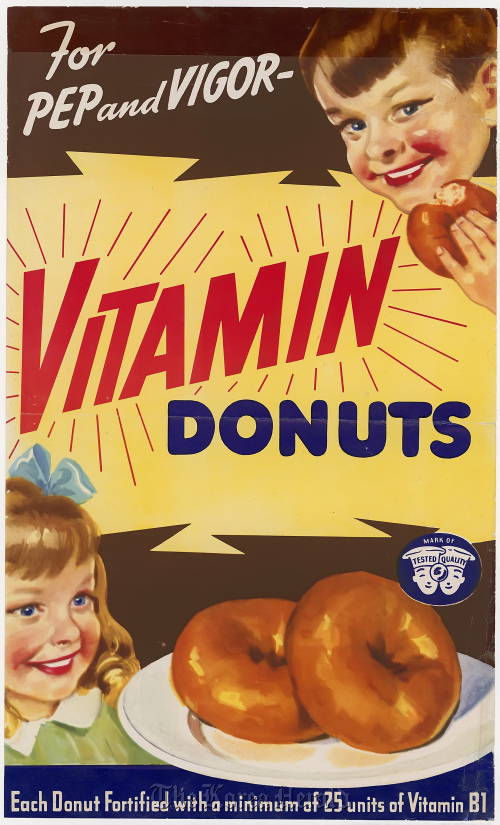WASHINGTON ― The U.S. government’s fascination with America’s eating predates the nation itself, and the National Archives can prove it.
On display at a new exhibit, “What’s Cooking, Uncle Sam? The Government’s Effect on the American Diet,” is a recruiting poster from 1776 that lists the rations the Continental Congress offered to the soldiers: beef, peas, beer and candies.
Tucked away on the first floor in the Lawrence F. O’Brien Gallery at the National Archives, the exhibit of more than 100 items ― including newspaper articles, photographs, documents and audio recordings ― shows the connection between the federal government and American life.
It’s broken into four easily digestible parts: farm, factory, kitchen and table. In them, curator Alice D. Kamps shows the evolution of the government’s involvement.
In the “Farm” section, a visitor can hear a clip from folksinger Pete Seeger singing an old song, “I’m a-Gonna Starve.” Its haunting refrain, “I’m a-gonna starve, and everybody will, if they don’t wise up on Capitol Hill,” illustrates the hard life and hunger of everyday Americans during the Great Depression.
Visitors also can meet government-sponsored explorers who brought new plants and vegetables back to American tables. For example, early in the 1900s, Frank Meyer traveled to Siberia and Manchuria, searching for new crops such as apricots. He’s probably best remembered for the Meyer lemon.

This early 1940s poster for Vitamin Donuts for “pep and vigor” is part of the collection on display at the National Archives about Americans and food called “What’s Cooking, Uncle Sam?” (U.S. National Archives/MCT)
“Factory” covers food dangers, regulation and processing.
Included is an eight-page letter to President Theodore Roosevelt about the hazards in the meatpacking industry written by noted author Upton Sinclair, who wrote “The Jungle,” a sensational novel about the slaughterhouses of Chicago.
Nutrition studies and wartime food campaigns are depicted in the “Kitchen” section.
Since 1894, the government has tried to offer advice on serving sizes, what should be “A Week’s Supply of Food for an American Family” and various information about food groups. Many of these were aimed at mothers, to improve the nutrition of their children.
Wartime posters exhorted Americans to “Grow more sugar beets in 1945” to “meet wartime need for sugar.”
Under “Table” are school lunches, military food and the presidency.
Eating habits introduced by the military services tended to be what soldiers liked later. School lunches started as child welfare programs.
Presidents often led the way on fashionable foods.
Dr. Roland Mesnier, a former White House executive pastry chef, says he used to get calls asking for his recipe after one of his desserts was served at a White House dinner:
“Chefs from downtown ... wanted the recipe for one of my desserts, because they wanted to reproduce it for their place because it was in a newspaper.”
Some presidents introduced new tastes to the national palate. The Johnsons gave us the Southern dish spoon bread, which resembles a thick pudding, and Pedernales River Chili, with lots of ground beef. Mamie Eisenhower had a deep dish apple pie that used the rind of a lemon and half a cup of brown sugar.
From grim statistics to hokey posters to nutrition and health, “What’s Cooking, Uncle Sam?” covers it all. It provides a snapshot of America’s food, eating habits and safety. Visitors will walk away more respectful of the past ― and very hungry.
By Tish Wells
(McClatchy Newspapers)
(McClatchy-Tribune Information Services)






